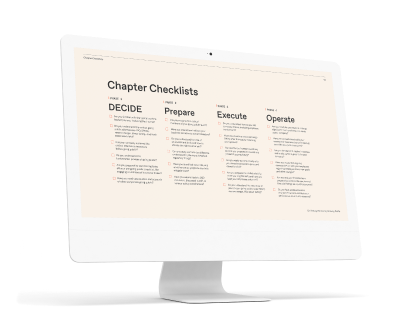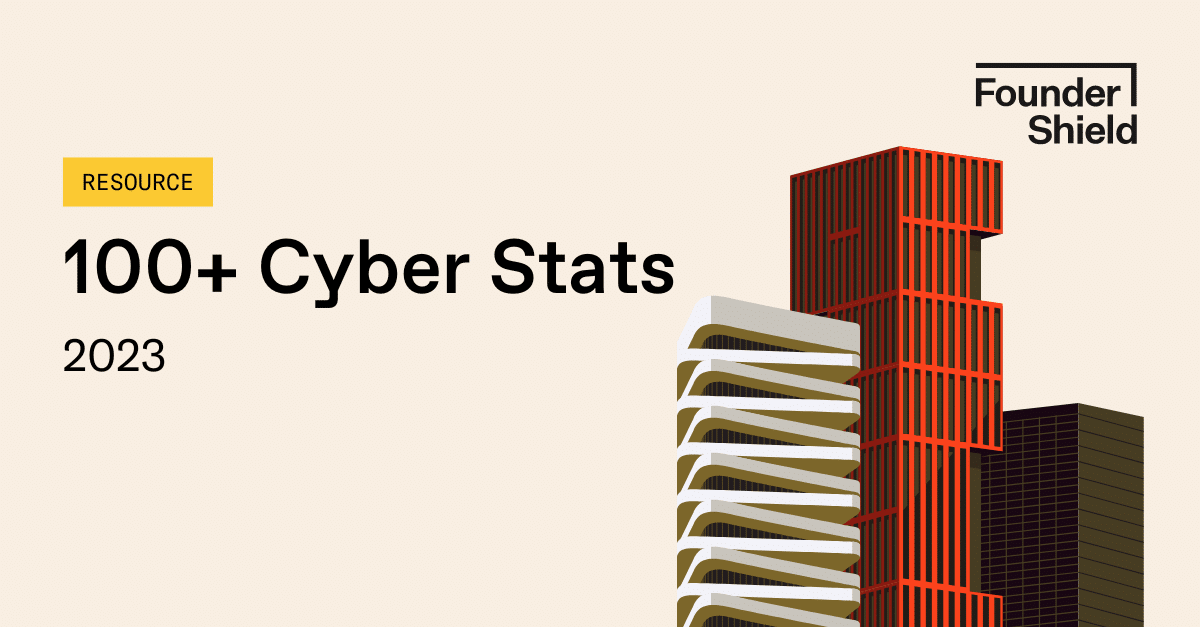Key Takeaways
Initial public offerings (IPOs) sound like a dream on the surface: Take Snowflake doubling its value on its first trading day as an example. However, the process of going public can be pretty tedious. As a company moves from private to public, the management team must reassess many aspects, from stringent Securities and Exchange Commission (SEC) requirements to talent acquisition and investor relations. So, you may be here because you already know the basics about going public — but let’s dive deeper.
Funding Rounds as the Stepping Stones to Going Public
It’s now extremely rare for a startup to be entirely self-funded from start to finish. Therefore, many companies follow a similar path: They raise capital, rapidly expand, and then prepare for an exit.
Financial backing can come in various forms to jumpstart a business in its early days. Most founders start with a small, intimate team of investors — but each round of funding attracts new investors. Seed funding is the first money many enterprises raise after finding a product-market fit. The investors are usually family and friends, incubators and venture capital firms focused on early-stage startups. Angel investors are also common at this stage.
Once a startup makes it through the seed stage and is operational, its revenue or the number of users may skyrocket. This means other early-stage private equity investors may develop an appetite for a slice of the pie. However, seed funding is often the endpoint for early-stage startups, and only about 60% will make it to Series A.
If a company is ready to raise a Series A round, the money usually comes from venture capital financing, although angel investors may make an appearance. More companies are using equity crowdfunding for their Series A funding too.
Some investors may choose to support companies throughout several rounds of financing. However, there are fresh lead investors for each round. These committed investors may expect a financial portion of the startup and a say in how things are done — and even choose to oust a founder, like with Uber’s Travis Kalanick.
Some companies stop at Series A, while others take their fundraising to Series E (or beyond) before being acquired or going public. Eventually, though, a venture capital (VC)-backed company must always decide whether to go public or remain private.
Between a Series C round and an IPO, a startup may discover an exciting new opportunity: a new market, product, or competitor to acquire. Series D funding could help realize these opportunities, while Series E funding may be necessary if previous funding rounds didn’t go to plan. However, Series D and E rounds can also reflect a company downturn.
Our parent company, Baldwin Risk Partners (BRP) Groups, Inc., went public in October 2019. But according to Trevor Baldwin, BRP’s CEO, that wasn’t the deliberate plan. At Founder Shield, we can attest that most entrepreneurs don’t have real-life aspirations of going public. It’s a natural progression that sometimes surprises directors and officers (D&Os); it makes them reevaluate their leadership positions and search for more protection for themselves and the company.
Series C Is Often the Last Stop To Go Public
At Series C, companies typically have a clear path to profitability and a strong financial position, a critical requirement for going public. They have already proven their business model, established a customer base, and demonstrated the potential for sustained growth. They also know their unique business story and how their narrative fits the market, positioning them well on the path to IPO.
Once a company has raised this significant capital, it’s a critical inflection point where it must use the funds to scale up operations, drive revenue growth, expand product offerings, and globalize the business. This means expanding into new markets and investing in infrastructure, technology, and personnel for sustained growth and success. It’s all about knowing which keys to play and when to play them. The likes of Airbnb and Bumble chose IPOs to boost brand awareness, support expansion, and attract top-tier talent.
By expanding their product portfolio, companies increase their revenue streams and market share, which helps them prepare for an IPO. This can be a lengthy and complex process that involves extensive regulatory requirements and due diligence. Companies will need to work with investment banks, lawyers, and accountants to ensure they meet all the requirements.
Most high-growth and late-stage companies will prepare to go public two years before the actual event whereas some opt for the fast track, spending only 6-18 months preparing.
Two options are less costly and time-consuming than traditional IPOs: Reverse mergers and special purpose acquisitions companies (SPACs). Reverse IPO is when a private company acquires a public company to bypass the lengthy and complex process of going public, allowing the owners of the private company to retain greater ownership over the new company. SPACs, on the other hand, raise funds through IPO intending to require another company. They have lower average post-market returns than traditional IPOs but are less stringent with requirements.
Alternatively, some companies may raise Series D, E, or later funding rounds to continue their growth trajectory before considering an exit. Ultimately, what happens after a Series C funding round will depend on a company’s specific circumstances, growth prospects and strategic goals.
Key Benchmarks Signaling IPO Readiness
The pressing question now is: “How do companies know they are ready to go public?”
Many think they should go public when their revenue hits $100 million. But some take the leap at $50 million or even $300 million. It’s more about growth potential, and a significant part of valuation will depend on sales growth in the fiscal year before going public.
You must ask yourself: Can you unfold a successful growth strategy after examining your revenue? Are investors salivating for your solution?
To help with the answers, here are some other important benchmarks to consider:
- Follow Generally Accepted Accounting Principles (GAAP) for the sophisticated handling of financial statements — the SEC follows these.
- Organize balance sheets, income statements and cash flow to disclose debts.
- Ensure you have critical hires in place before embarking on the journey to take your company public. It’s imperative to confirm that your finance team, board of directors (BOD), SEC consulting team, and tech specialists all possess prior experience in navigating IPO processes. Moreover, it’s paramount to assess whether your current CFO is the ideal candidate for the role, especially when considering the expertise needed to collaborate effectively with risk consulting firms.
- Make sure to have top-notch earnings before interest, taxes, depreciation, and amortization (EBITA). Below-average EBITA margins mean low valuations.
- Curate strategic connections with investment bankers to assess financial performance and health.
- When assessing your business risk management solutions, it’s crucial to conduct a thorough review of your D&O insurance policy. Take the time to acknowledge emerging risks, such as the potential size of claims, third-party liabilities, and reputational risks. By staying vigilant and proactive in monitoring and adapting to these evolving risk factors, you can strengthen your overall risk management strategy and safeguard your business against potential pitfalls.
Going public through an IPO is a major milestone but also a daunting task. As listed above, companies must be aware of regulatory compliance requirements and have a strong management team and financial track record for long-term success in the public markets.
Risk Management Changes as Companies Grow
D&O lawsuits aren’t uncommon in the context of IPOs. Investors may sue if they believe the company and its D&Os didn’t disclose information or misrepresented the company’s financials or prospects. Look at Facebook’s 2012 lawsuit post-IPO.
As companies transition from private to public, D&O insurance becomes far from a mere grab-and-go policy. It’s time for companies to revisit market cap, industry type, size of offering, BOD composition, risk tolerance, and coverage needs. Companies should engage a commercial insurance broker about D&O insurance a year before planning to go public.
A public D&O policy tends to be more expensive and have higher retentions than its private counterpart, mainly due to more frequent claims activity. That’s because there are more stakeholders in public companies than private ones.
Therefore, business leaders tend to favor legacy insurance players — AIG, Zurich, AXA — over lesser-known insurers. But it doesn’t really matter which carrier you choose for D&O insurance as long as they have a strong history of paying and defending claims and a strong rating and reputation.
Other popular insurance coverage to consider before an IPO include:
- General Liability
- Cyber Liability
- Employment Practices Liability (EPL)
- Intellectual Property
- Fiduciary Liability
- Employee Health & Benefits
- Representations & Warranties (R&W)
Going public through an IPO can be a critical step for a company, but also complex and risky, with potential pitfalls. Therefore, companies considering an IPO must prepare thoroughly with the correct insurance to de-risk their journey. If you have no clue where you stand, Founder Shield can assess your risk profile and provide direction on the insurance you need.











